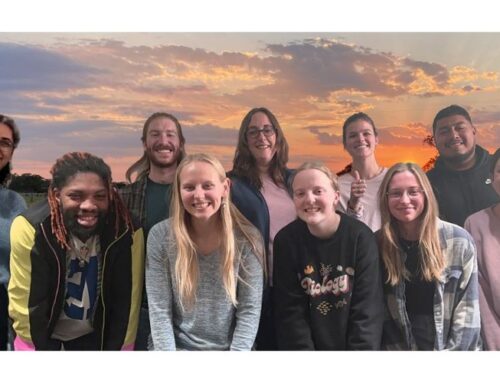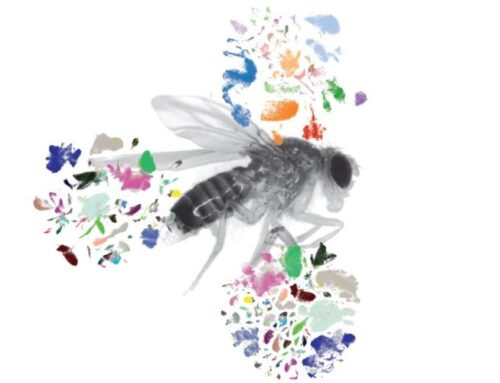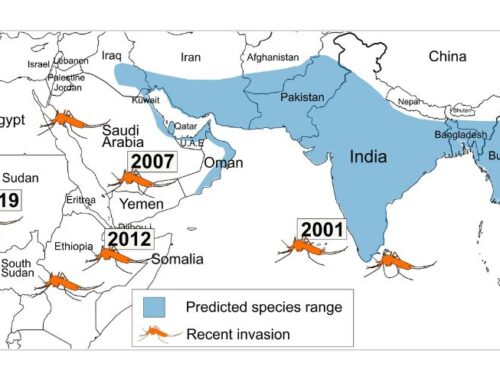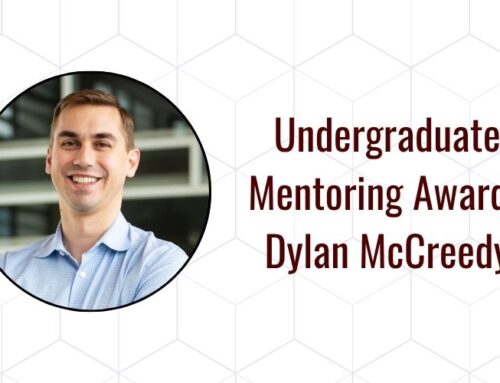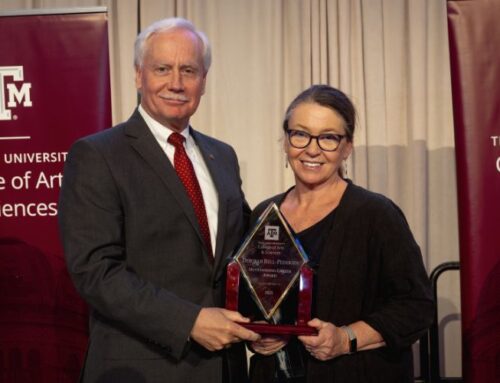Graduate Student Spotlight, Prakruthi Amar Kumar
This month’s Graduate Student Spotlight highlights Prakruthi Amar Kumar. A student in the Dulin Lab, Prakruthi works on understanding the maladaptive hyperactivity of pain neurons after spinal cord injury. Learn more about Prakruthi and her graduate experience in this month’s Spotlight below.

Prakruthi Amar Kumar
Prakruthi Amar Kumar hails from the southern part of India and her hometown is a city called Bangalore. She is currently a 5th year PhD student in Dr. Jennifer Dulin’s lab, in the department of biology at Texas A&M University. She received her Master’s degree in microbiology from St. Joseph’s College, Bangalore, India in 2016. She began her research career during her Masters dissertation research at the National institute of mental health and neurosciences (NIMHANS), Bangalore, India, where she performed phenotypic and genotypic Characterization of MRSA (Methicillin Resistant Staphylococcus aureus) isolates from Neurosurgical wound samples to identify antibiotic resistance genes. She then went on to work as an associate research scientist at Bugworks research India Pvt Ltd for 2 years where she worked on the development and optimization of a model for E. coli biofilm formation, and also worked on identifying novel antimicrobial compounds against multidrug-resistant Gram-negative superbugs.
In the Dulin lab, Prakruthi’s research is aimed at understanding the hyperactivity of pain neurons early after spinal cord injury, and working to transiently silence these neurons to prevent the development of neuropathic pain and improve functional outcomes after injury. After completion of her PhD, she is keen on pursuing clinical research opportunities and be able to actively engage and interact with human patients, in research focused on neuroregenerative approaches, pain or cancer research. Outside of research, Prakruthi enjoys singing, cooking, dancing, reading novels and hanging out with friends. She is also a trained Indian classical vocalist and has performed at many concerts in India.
 What is your research project?
What is your research project?
My research project is focused on understanding the maladaptive hyperactivity of pain neurons after spinal cord injury and using a chemogenetic approach to specifically modulate and silence these hyperactive neurons, to prevent the development of neuropathic pain and improve long term functional outcomes after a spinal cord injury.
What is the broader significance of your work?
Neurons of our central nervous system (Brain and Spinal cord) have a unique ability to reorganize their lost connections to a limited degree in the event of an injury or trauma. This special property is called ‘plasticity’ – the ability of neurons that survive the injury, to reorganize and compensate for lost functions. While this is beneficial to a certain extent, it could often have adverse effects on recovery.
After spinal cord injury (SCI), there is a disruption in many motor and sensory circuits within the cord. Although pain-sensing neurons exhibit a massive amount of plasticity by sprouting new nerve fibers after SCI, this is bad because it brings about an inherently hyperactive state of these neurons leading to many adverse consequences on sensory and motor recovery after injury. This ‘bad’ plasticity often causes SCI patients to chronically experience persistent pain, which detracts from quality of life. Due to these reasons, blocking abnormal pain signaling that occurs early after spinal cord injury has been a long-standing goal of SCI researchers.
In this study, we have used a promising technology called chemogenetics, which enables the expression of a receptor protein called DREADDs, specifically within pain-sensing neurons. Upon activation, the receptor protein acts as a reversible ‘light switch’ to transiently silence pain neurons inhibiting them from signaling in an aberrant fashion. We have used this tool to silence pain neurons in the first few days after SCI in rats followed by assessment of sensory and locomotor behavior. Through this approach of pain silencing, we can achieve dual beneficial effects of preventing pain as well as improving locomotor recovery.
 What is the best advice you’ve been given?
What is the best advice you’ve been given?
It’s not really advice but this is the best thing someone said to me, and it has stuck with me – “A charismatic person has the perfect balance of warmth and competence.”
Advice I’ve been given – Be in the moment, focus on what is in your control and let go of what is not.
What’s on your bookshelf?
‘Becoming’ by Michelle Obama & ‘Deception point’ by Dan Brown
What is one thing people would be surprised to know about you?
That I’m a trained Indian classical musician (vocalist) and that I absolutely love to sing and enjoy dancing too. A lot of my friends here in the US had no idea and were surprised.
Describe someone outside your field of interest who inspires you and why?
Outside my field of interest, my dad is my biggest inspiration and role model. Ever since my childhood, I have seen him work tirelessly and he instilled in me to never leave anything up to chance and that the only path to success is hard work and there is no other alternative. Even on days when he didn’t feel very well, I have never seen him not go to work and rest at home even a single day. He believes in giving 100% to everything that you do, no matter how tiny or big, important or unimportant the task is. He always gives selflessly most times altruistically, without expecting anything in return. Very early on he taught me to value time and be punctual, dependable, accountable and trustworthy. He has always taught me to be tough, prepared, and resilient. Whenever I am faced with any challenge or difficult situation, I always remember that he used to say ‘when the going gets tough, the tough get going’, and ‘if you’re willing to work hard, you can achieve anything’.
What advice would you give to a new graduate student?
Do not hesitate to ask questions. No one else has your best interests in mind, so advocate and stand up for yourself. Know when to say no. Align expectations with your mentor right at the outset. Do not hesitate to clearly state what your expectations from your mentor are and also do not hesitate to ask to clearly define their expectations. Practice effective communication.
 What strategies do you use to be successful in your graduate program?
What strategies do you use to be successful in your graduate program?
Be meticulous and thorough in everything you take up. Practice clear and effective communication. I Cannot emphasize enough the importance of networking. Build contacts. Share your research, be receptive and open to other’s ideas, constructive criticism and feedback, listen to understand and not to react. Ask questions – no question is too small or silly. Set goals that are SMART (Specific, Measurable, Achievable, Relevant, Time bound).
Besides these, in order to stand out, one always has to put in a little extra than what is typically expected of them. In addition to giving 100% to research and the graduate degree, which is the ultimate goal, I would iterate the importance of getting a well-rounded experience in grad school by being interactive, being involved in departmental organizations, interacting with people outside of your area, and making the whole process more rewarding.
What attracted you to your major?
I’ve always been passionate about science, especially biology. As I learnt through classes in school, I would think about the functioning of different systems within our body and how something going wrong in them could lead to life threatening health conditions. But it was my father, who very early on, inspired me to go into research in biology. During my middle school and high school days, my dad would urge me to write about what I want to be growing up and what career path I would want to choose. He would always motivate me talking about how important research is, particularly research related to human health and medicine. He would tell me his thoughts on how discovering new therapeutics or treatment strategies, identifying solutions to critical issues in clinical research (or even having a role of any magnitude in this process) to improve medical conditions and solving ‘need of the hour’ medical problems is invaluable and can make such a huge positive difference in people’s lives. Especially in neuroscience where a majority of injuries or trauma leads to such debilitating consequences which affects even the most normal daily activities in the lives of patients, I am very motivated to work in this area and make a small contribution that could directly impact people’s lives in a positive way
What was a memorable experience at A&M?
One of the memories I fondly remember at A&M is from my first year. It was my first time attending a midnight yell for a fall football game with a few of my friends. I was amazed to see such a massive gathering come together just to practice supporting and cheering for our players the following gameday. It makes me so proud to be a part of this institution with several rich and unique traditions. That day, I witnessed a true sense of solidarity, and oneness among students.
How has a research career had an impact on your thinking?
Research is all about trying to answer unanswered questions and meeting unmet needs. Time and again, it has made me realize that we only know very little and we dig deeper and deeper to go into a very small niche and solve a tiny piece of the puzzle or find answers to very specific questions. In this process, it has made me realize, the deeper/narrower we go the more I realize how little I know. In my opinion, this gives me perspective that I’m just a tiny speck in the universe of so many things that are larger than life. This helps me a lot to be grounded and humble. Research has also taught me to take success and accept failure in equal stride. In this process of moulding myself to be an independent thinker with scientific temperament and honing my science research skills, these are a few of the things I’ve mentioned that have influenced my thinking.

